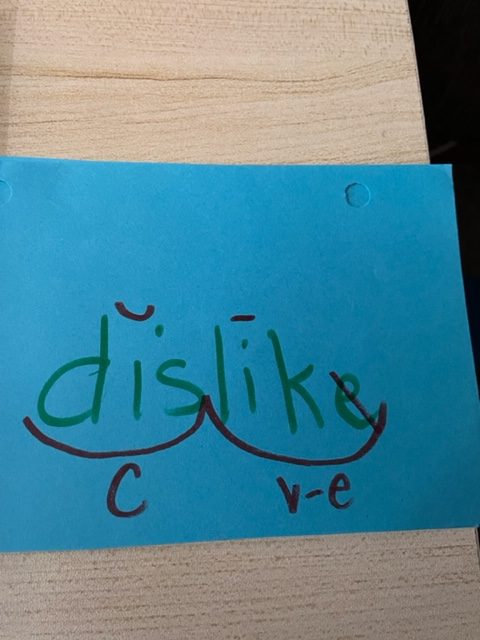Dividing words in syllables is hard work. Teaching students how to divide syllables is an important skill. The rules for dividing syllables are easy when taught explicitly. Dividing words into syllables helps with decoding and encoding. According to IMSE, “ syllable division utilizes direct, systematic instruction for breaking phonetic, multisyllabic, words into small manageable chunks by identifying the syllable pattern.” (Schukraft, 2020) There are six different types of syllables in the English language. The most common is a closed syllable. The next syllable that is usually taught is the vowel consonant E. Some schools call this Magic e or silent e. When multisyllable words are first taught, usually it is the combining of two or more closed syllables to make a longer word. Some words like Manhattan or established are words made with only close syllables. It is amazing how many words can really be read if closed syllables are mastered. Reading is not all about short vowels so students need to be taught the short and long vowels which are most easily made by adding the E at the end of the word. Dividing these words help students read more quickly and more fluently and more accurately. Students need to be able to go back-and-forth between the short vowels sounds and the long vowel sound in words. Combining closed and vowel consonant e syllables make up many common words in the English language.

Why Teach Syllable Rules?
The most important reason for teaching syllable division is to help children decode. When they see multisyllabic words they don’t know where to begin. Teaching the rules on how to divide words gives them a tool to read that word. This is why fluent readers can read unfamiliar words with relative ease, they know the way words work. All readers can learn to read if taught explicitly.
To teach syllable division have the students look for the vowel or vowels. In the beginning, students should identify the vowels and then divide between them in words like napkin, cactus and midship. They are pretty easy to divide into syllables because it is clear where the consonants are divided. When words only have one consonant between the vowels it gets a little trickier. Words like solid, relish and medal all have a closed syllable for the first syllable. It gets hard when you have words like program, baby and relax cause problems for students because if they do not know the word they may try to close the first syllable. It is a good practice to have students underline the vowels to help them get started like here valentine

How To Mark Syllables When Dividing Syllables
There are many ways to represent syllable division. When I was in school we said the words with our hand under our chin and we counted how many times our chin dropped and that was the number of syllables. Other teachers have their children clap for each syllable. I like to have the students divide the words by underlining or scooping each syllable. This is less confusing for students because sometimes they think the line that divides the syllables is part of the word. cab/in or cabin . Use whichever is easier for your students.
Once you teach students to divide words into syllables they need to practice. The practice can be as simple as reading a word, scooping the syllable and then identifying the syllable. Worksheets where students blend syllables to make a new word is an easy task to help practice syllable division. Games can also be played with cards that have different kinds of syllables on them, the student can put the two syllables together, read the new word and then decide if it is a real word. This resource can help your students practice.
Sometimes the way a word is divided in writing and speaking is different. The word grocery has three syllables when writing but when speaking we say it in two. These differences are confusing but when teaching students use the written division rules because the students probably already know the spoken rules. The word experience also has different division rules. It is probably because speech patterns change over time but the syllable rules do not. The truth is even if the rules are not perfect they still provide some help to students on how to divide and read an unknown word.https://decodingforsuccess.com/
